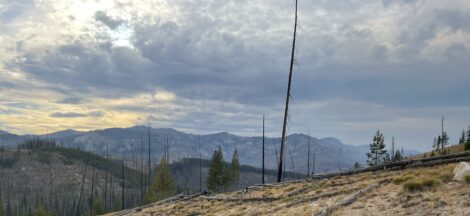Organizing and Executing a Successful Deer Hunting Trip
Planning and executing a successful deer hunting trip can be a rewarding and memorable experience. It requires careful preparation, organization, and execution to ensure you have the best possible chance of bagging a trophy buck. In this guide, we’ll walk you through the essential steps and offer practical tips to help make your deer hunting trip a success.
1. Planning Your Deer Hunting Trip
Proper planning is the foundation of a successful deer hunting trip. Here are some critical aspects to consider during the planning phase:
A. Determine Your Hunting Goals
Before embarking on your deer hunting trip, it’s essential to establish clear hunting goals. Are you after a specific buck or a particular type of deer? Are you looking to fill your freezer with venison, or are you more interested in the overall experience? Establishing your goals will help guide your decisions throughout the planning process.
B. Research Hunting Locations and Regulations
Once you have your goals in mind, research potential hunting locations. Consider factors such as deer density, habitat, and hunting pressure. Additionally, familiarize yourself with the hunting regulations and licensing requirements for the area you plan to hunt.
C. Choose the Right Hunting Method
Select a hunting method that best suits your goals, experience level, and the terrain you’ll be hunting in. Popular deer hunting methods include stand hunting, spot and stalk hunting, and still hunting. Each method has its advantages and challenges, so choose the one that aligns with your goals and preferences.
D. Plan Your Accommodations and Logistics
Consider where you’ll stay during your hunting trip, whether it’s a hunting camp, hotel, or private land. Additionally, plan the logistics of your trip, such as transportation, meals, and communication with your hunting party.
2. Preparing for Your Deer Hunting Trip
With your hunting trip planned, it’s time to start preparing. Here are some essential tasks to complete before you head out:
A. Assemble Your Hunting Gear
Gather all the necessary hunting gear, including your weapon, ammunition, clothing, optics, and other essentials. Double-check that everything is in working order, and make a checklist to ensure you don’t forget anything crucial.
B. Scout Your Hunting Area
Scout your hunting area in the weeks leading up to your trip. Look for signs of deer activity, such as tracks, rubs, and scrapes. Set up trail cameras to monitor deer movement patterns and identify potential stand or blind locations.
C. Practice Your Shooting Skills
Ensure your shooting skills are sharp by practicing at the range or in the field. Familiarize yourself with your weapon, and make any necessary adjustments to improve accuracy and comfort.
D. Prepare Physically
Deer hunting can be physically demanding, especially if you’re hunting in rugged terrain. Spend time conditioning your body through cardio exercises and strength training to ensure you’re in peak physical shape for your hunting trip.
3. Executing Your Deer Hunting Trip
With thorough planning and preparation, you’re ready to execute your deer hunting trip. Follow these tips to maximize your chances of success:
A. Establish a Daily Routine
Develop a daily routine to help you stay organized and focused during your hunting trip. Wake up early, have a hearty breakfast, and head out to your hunting spot well before sunrise. Stick to a consistent schedule to increase your chances of encountering deer during their most active times.
B. Hunt Smart
Utilize the scouting information you gathered before the trip to guide your hunting strategy. Pay close attention to wind direction, as deer have an exceptional sense of smell and can detect your scent from a considerable distance. Make sure you’re positioned downwind from your target area to avoid alerting deer to your presence.
C. Be Patient
Patience is critical for successful deer hunting. Spend as much time as possible in the field, and don’t get discouraged if you don’t see deer right away. Remember that deer are creatures of habit, and persistence often pays off in the end.
D. Communicate with Your Hunting Party
If you’re hunting with a group, maintain open lines of communication to ensure everyone’s safety and coordinate your efforts effectively. Establish meeting points, check-in times, and emergency plans before heading out into the field.
E. Practice Ethical Hunting
As a responsible hunter, it’s essential to practice ethical hunting techniques. Only take shots you’re confident in, and aim for the most effective shot placement to ensure a quick, humane kill. Additionally, respect the land you’re hunting on and follow all local regulations.
4. Wrapping Up Your Deer Hunting Trip
Once your hunting trip comes to an end, it’s time to wrap things up and head home. Here are a few final tasks to complete:
A. Process Your Harvest
If you were successful in harvesting a deer, properly field dress, skin, and butcher the animal to preserve the meat. Properly store and transport the meat to ensure it remains fresh and safe to eat.
B. Clean and Maintain Your Gear
Before heading home, clean and maintain your hunting gear to ensure it’s ready for your next adventure. Clean your weapon, wash your clothing, and check all your equipment for signs of wear or damage.
C. Reflect on Your Experience
Take the time to reflect on your deer hunting trip, noting any lessons learned or memorable moments. Use this information to help plan and improve future hunting trips, and don’t forget to share your stories with fellow hunters and friends.
In conclusion, organizing and executing a successful deer hunting trip requires careful planning, preparation, and execution. By following the tips and advice shared in this guide, you’ll be well on your way to experiencing a memorable and rewarding deer hunting adventure.





 The Effect of Coyote Predation on Deer Hunting Prospects
The Effect of Coyote Predation on Deer Hunting Prospects